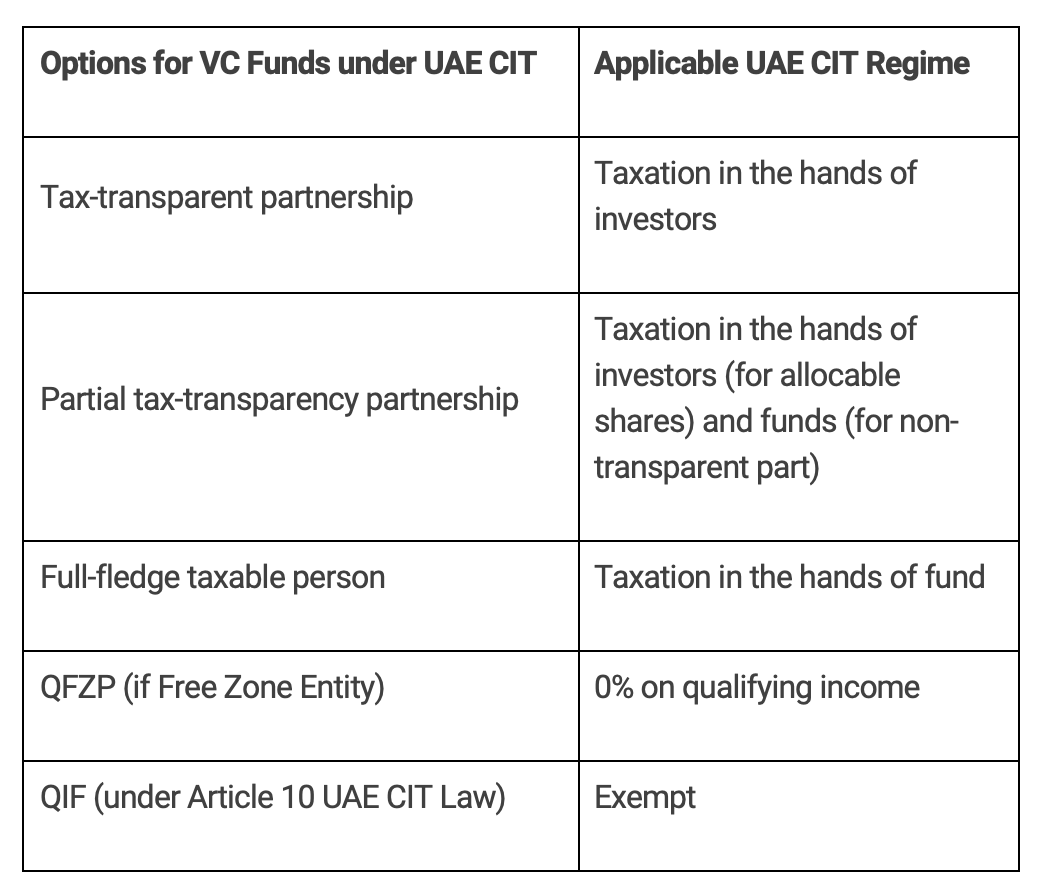

Tax Planning Strategies for Individual Business Owners in the UAE
Starting June 2023, businesses in the UAE are subject to Corporate Income Tax (CIT). UAE CIT applies at the rate of 9% or 0% on Qualifying Income if businesses are Qualifying Free Zone Persons (QFZPs) and provided other criteria relating to the activity carried out are fulfilled. A UAE business may also be liable to a Top-up Tax if it qualifies as a Multinational Enterprise (MNE) under the OECD Pillar 2 Solution once a Cabinet Decision is issued to confirm the entry of force in the UAE of the GloBE rules (the Ministry of Finance (MoF) launched a Public Consultation on Implementation of Global Minimum Tax in the UAE in March-April 2024).
Natural persons, i.e., any individual endowed with legal capacity, do not generally fall into the scope of UAE CIT. This is because income from Employment (Wages), Personal Investment, and Real Estate Investment are not taken into account for UAE CIT purposes. On the other hand, when natural persons conduct Business activity, they are fully in the scope of UAE CIT, but only if they earn revenues exceeding AED 1 million (approximately a bit more than USD 270,000) during a Gregorian calendar year. Excluded income (i.e., income from employment, personal investment, and real estate investment) is disregarded for the purpose of determining the AED 1 million turnover threshold, regardless of the amount.
Differences in the scope of UAE CIT Law (Federal Decree-Law No. 47 of 2022 on the Taxation of Corporations and Businesses) for corporate and natural persons may create tax planning opportunities. For instance, untaxed income at the level of natural persons generally constitutes a taxable expense at the level of the corporation. Tax benefits may arise from the combination of deduction and non-inclusion of the same income item from the scope of UAE CIT. Nonetheless, such a tax planning strategy is open only to individual shareholders of corporations, given that they are the ones having more control over a company’s expenses.
In this article, we will discuss various tax planning strategies for individual shareholders. This description is, however, not exhaustive since many other opportunities to reduce taxable income exist which would not benefit individual shareholders. One such example is making a donation to a Qualifying Public Benefit Entity (QPBE) as defined by Article 9 of UAE CIT Law (e.g., a museum), which is tax deductible.
In the following, we will also explore the safeguards the UAE Federal Tax Authority (FTA) has put in place to counter the potential abuse of UAE CIT rules. However, we will not delve into structuring opportunities for private wealth benefiting future generations, such as (family) foundations, trusts, or other structures.
1. Salary & Bonuses
The most obvious tax planning strategy is to enter into an employment agreement with a privately held entity. The natural person who does so can derive compensation from the company in the form of wages.
In the FTA Guide on Natural Person (CTGTNP1), “wage” is defined as “the wage that is given to the employee in consideration of their services under the employment contract, whether in cash or in kind, payable annually, monthly, weekly, daily, hourly, or by piece-meal, and includes all allowances, and bonuses in addition to any other benefits provided for, in the employment contract or in accordance with the applicable legislation in the State”. To meet this definition and be considered a “wage” for UAE CIT purposes, it is therefore important that an employment contract has been concluded and a policy around additional allowances has been established.
According to the FTA, employee costs are generally considered to be wholly and exclusively incurred for Business purposes, provided they are not excessive (section 4.5.2 of the FTA Guide on Determination of Taxable Income, CTGDTI1). Employment-related expenditures also need to meet the arm’s length standard where employees are Related Parties or Connected Persons.
As such, it is not relevant whether an employee is paid wholly in cash or also receives other benefits, such as a car for personal use. In this situation, personal use should be viewed in the same way as the employee spending their cash salary on items for their personal benefit. The same applies to other benefits, such as medical insurance or a flight allowance (also for spouse and children). In other words, the cost is wholly and exclusively for Business purposes as rewarding employees is wholly a Business purpose. The rationale applied here is similar to that followed for entertainment expenditures under Article 32 of UAE CIT Law.
Based on this scenario, the UAE company would benefit from claiming a tax deduction for the salary paid and benefits granted. At the same time, for the individual, the wages received are not considered business income and, hence, neither are subject to CIT.
The value of any payments or benefits is, however, limited by the “connected person” concept, defined in Article 36(2) of the UAE CIT Law as any person affiliated with a taxable person. Shareholders, directors and managers of companies are considered connected persons, and they need to justify the market value of the payments and benefits they receive in order for them to be tax deductible. The market value is the price that can be agreed upon in an arm’s length free market transaction. A payment or benefit provided by a taxable person to a connected person is deductible only if and to the extent the payment or benefit corresponds with the market value of the benefit and is incurred for business purposes. Connected persons are the owner, a director or officer, or a related party of the owner, director or officer. A director or officer could be the Managing Director of an LLC (section 6.6.3. of the FTA’s General Corporate Tax Guide, CTGGCT1).
According to Article 35(1)(a) of the UAE CIT Law, a related party can be a natural person within the fourth degree of kinship or affiliation, including by way of adoption or guardianship (detailed provisions to calculate the degree of kinship are laid down in section 4.4.1. of the FTA’s Guide on Natural Person, CTGTNP1). Such a related party could be, for instance, the son of the LLC owner (section 6.6.3. of the FTA’s General Corporate Tax Guide, CTGGCT1).
An owner is any natural person who directly or indirectly possesses an ownership interest in the taxable person or controls such taxable person. Under Article 35(2) of the UAE CIT Law, “control” is defined as “the ability of a person, whether in their own right or by agreement or otherwise to influence another person”. In this regard, the FTA gives the example of an individual owner of an LLC (section 6.6.3. of the FTA’s General Corporate Tax Guide, CTGGCT1).
Certain exceptions apply, which are motivated by the transparency of salaries and presumed oversight by regulators or shareholders, as they are, in principle, capable of limiting the payments and benefits unduly granted. Notably, Article 36(6) of the UAE CIT Law excludes the application of the “connected persons” concept to taxable persons whose shares are traded on a recognized stock exchange (a UAE-licensed and regulated stock exchange or foreign stock exchange of equal standing), or taxable persons subject to the regulatory oversight of a competent authority in the UAE. The UAE Federal Cabinet can further provide for additional exceptions.
2. End-of-Service Benefit (“EOSB”)
This opportunity relates to the creation of provisions for the purposes of EOSB under UAE labor law. The FTA considers that if a provision is created in the financial statements and this is done in accordance with the applicable accounting standards (IFRS or IFRS for SMEs), the provision will be allowed as a deduction as long as it satisfies the overall requirements for deductibility of expenses.
UAE auditors have historically often taken the position that EOS obligations do not apply to shareholders working in companies and having an employment contract when those shareholders are expatriate employees. Labor lawyers dispute this position. Individuals can hold a dual role within the business, i.e., shareholder and employee. Where there is an employment contract, the EOS obligations apply. Thus, shareholders who have historically not accrued EOSB can do so. If this is solely an accrual, it would create an expense for the company under the principles explained above.
Further, companies may consider removing the EOS accrual from their books by paying the equivalent amount into a private pension fund as determined in Ministerial Decision No. 115 of 2023. As long as the shareholder’s contribution does not exceed 15% of the employee’s total remuneration for the tax period, the expense should be deductible from UAE CIT income. However, it is unclear whether the expense would be deductible if it related to EOS accrued before the application of UAE CIT to the corporation.
3. Director Fees
Individuals acting as directors for a company could also derive director fees from such companies, which would be tax-exempt for such individuals. Director fees received by an individual are not, in fact, considered business income but are generally treated as wages and, hence, are not subject to CIT (section 3.8.1. of the FTA’s Guide on Natural Person, CTGTNP1). On the other hand, directors are considered connected persons and also need to comply with the abovementioned principles as laid down under point 1 of this article.
4. Interest Income
Generally speaking, provided the general interest deduction limitation conditions under Article 30 of UAE CIT Law are met, the interest is tax deductible at the corporate level and goes untaxed at the level of the natural person if considered personal investment income.
In the FTA Guide on Natural Person (CTGTNP1), “personal investment” is defined as “Investment activity that a natural person conducts for their personal account that is neither conducted through a Licence or requiring a Licence from a Licensing Authority in the UAE, nor considered as a commercial business in accordance with the Federal Decree-Law No. 50 of 2022 issuing the Commercial Transactions Law”.
Notably, a company can deduct up to AED 12 million or 30% of adjusted EBITDA without limiting the interest charge. Even if the interest is not deductible, it can be carried forward for up to 10 years. When capitalizing a company for financing purposes, the shareholder can notably consider providing financing to the company through a shareholder loan rather than adding additional equity to the company (which does not generate a tax deduction). The UAE regulates financing activities. However, we assume that limited financing activities to a company owned by the shareholder would not require regulation.
5. Renting or selling commercial space to the company
As stated, “real estate investment” income is disregarded for UAE CIT purposes. In the FTA’s Guide on Natural Person (CTGTNP1), “real estate investment” is defined as “Any investment activity conducted by a natural person related to, directly or indirectly, the sale, leasing, sub-leasing, and renting of land or real estate property in the UAE that is not conducted, or does not require to be conducted through a Licence from a Licensing Authority”.
Taking such an exclusion into account, shareholders who own commercial real estate (office, warehouse, etc.) may consider renting it to their own company or the legal entity they control. The income from the rent will be untaxed in the shareholder’s hands as real estate investment income while being deductible for UAE CIT purposes at the corporate level.
In the alternative, the shareholder may consider selling commercial real estate (office, warehouse, etc.) to his own or a controlled company. The sale would go untaxed as regarded as real estate investment income, and the asset may generate a tax-deductible expense through depreciation. Capital appreciation, however, may impact the company’s future taxable profits.
6. Lease or rent any assets to the company
As long as the income from leasing or renting the assets is not higher than AED 1 million, the lease or rent would be untaxed in the hands of the natural person shareholder while constituting a tax-deductible expense in the hands of the company.
An example of that effect could be a company using trucks, which it rents from its shareholder, who is a natural person. The company will need to identify whether the operation potentially qualifies as the acquisition of an asset by the company, and, therefore, the asset needs to be depreciated rather than a deduction of expenses to be taken.
It is also possible for an individual to conduct a personal investment activity towards his own or a controlled company. For example, an individual shareholder may decide to sell or rent out an artwork to his own or controlled company. The sale or rent would be untaxed in the hands of the natural person shareholder while constituting a tax-deductible expense in the hands of the company.
It is recommended that proper documentation be prepared for the above transactions and that they be conducted at arm’s length between connected persons.
Moreover, it should be noted that all these tax planning strategies are subject to the scrutiny of the General Anti-Abuse Rule (GAAR) laid down in Article 50 of the UAE CIT Law. This GAAR endows the FTA with the power to counteract or adjust tax advantages obtained by taxpayers – both companies and individuals – in an abusive manner. As described by the Explanatory Guide on UAE CIT of May 2023, this occurs when taxpayers seek to reduce their tax liabilities in a way that is not consistent with the original intent and purpose of the law whilst still complying with the letter of the law. The test is whether it can be reasonably concluded that the taxpayer entered into the transactions and arrangements without a valid commercial reason and that its main purpose was to obtain a tax advantage that was not consistent with the intention of UAE CIT Law. To this end, all the relevant circumstances of the case must be examined.
Finally, it must also be considered that if the legal entity qualifies as a QFZP, the above strategies are less important, given that the tax-deductible expense reduces the tax liability to 0. However, they may still be important if there is a risk that the QFZP may be disqualified. As to companies falling into the scope of Pillar 2, the deduction would reduce GloBE income and, therefore, also the base on which the Top-up Tax is calculated. However, there are unlikely to be many privately held companies that are also within the scope of Pillar 2.





























